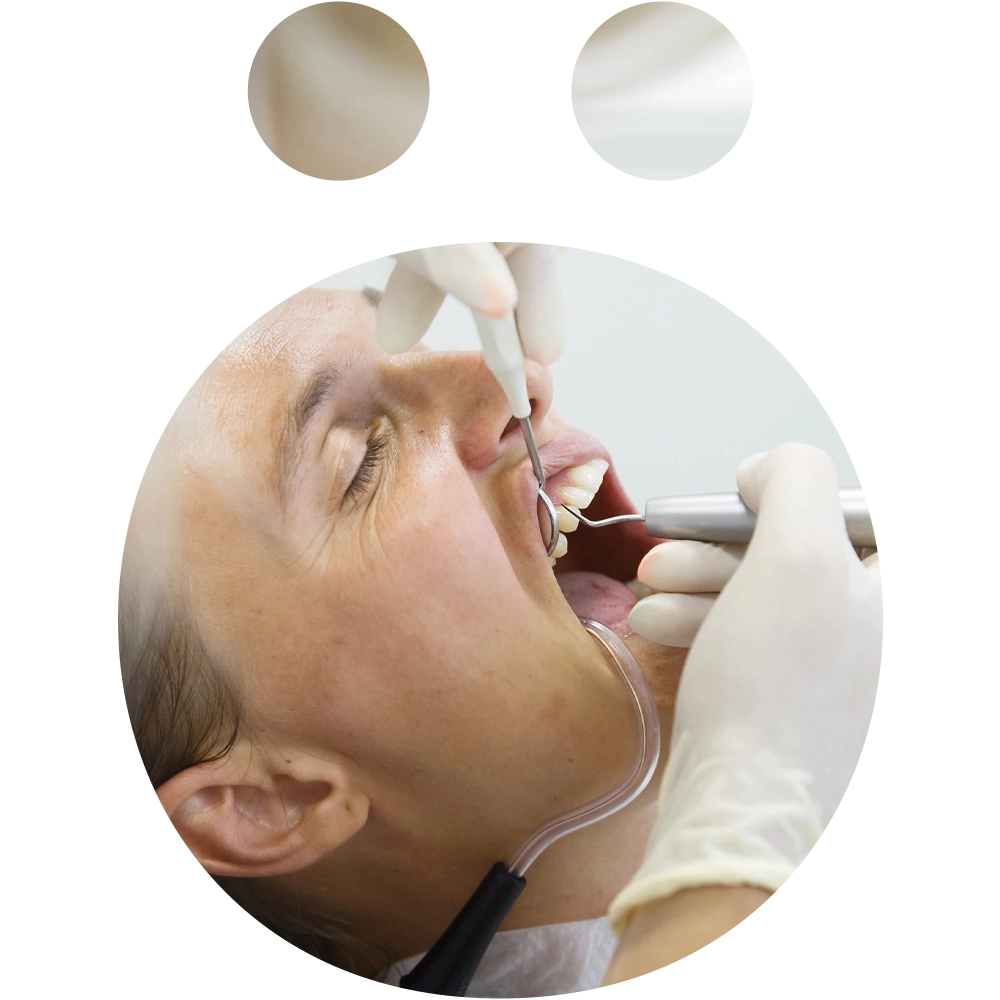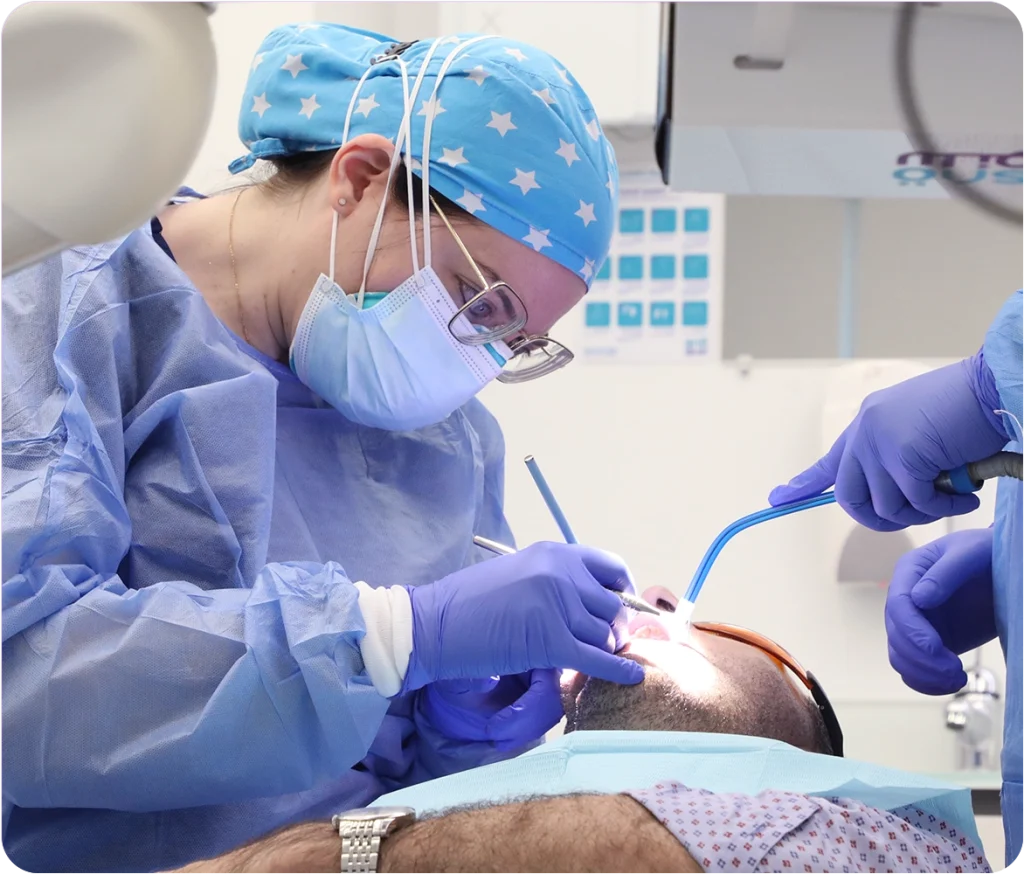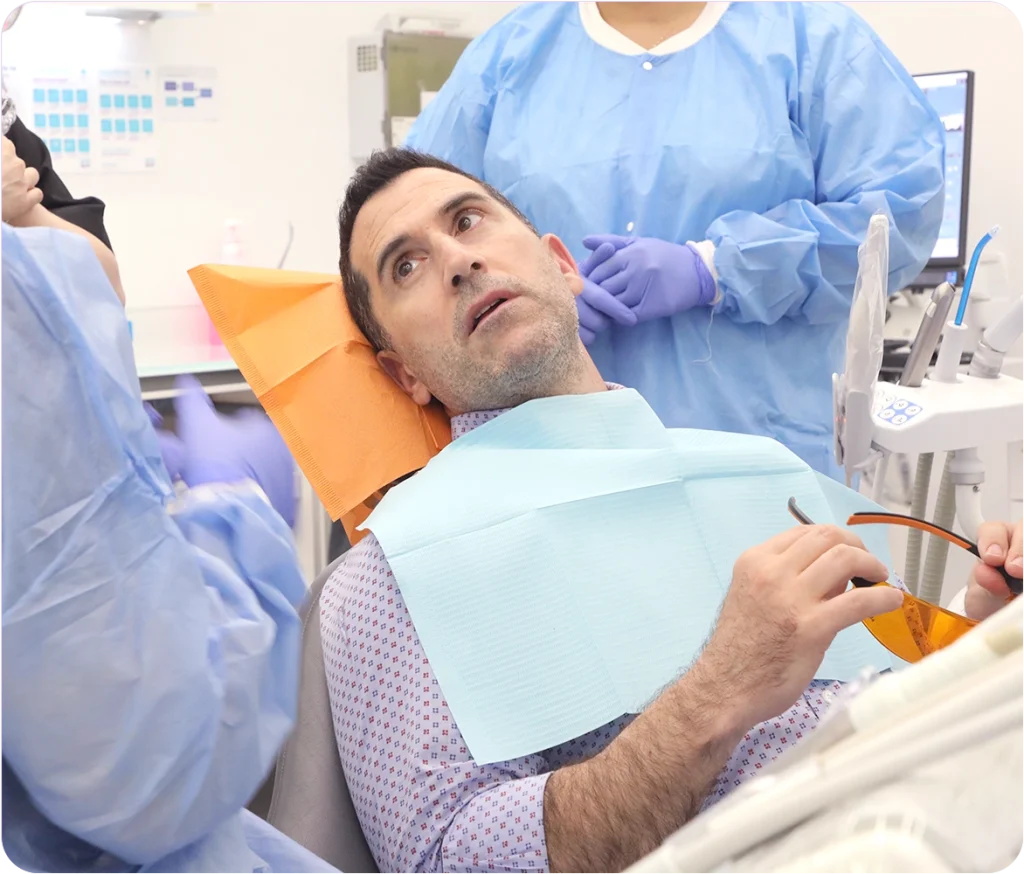Periodontics
Periodontics is a dental specialty focused on the prevention, diagnosis, and treatment of diseases and conditions affecting the supporting structures of the teeth, including the gums, bone, and ligaments. The primary goal of periodontics is to maintain or restore the health of these structures, preventing tooth loss due to gum disease (periodontal disease).
The primary cause of periodontal disease is bacteria in dental plaque, a sticky film that forms on your teeth. Risk factors include poor oral hygiene, smoking, hormonal changes, and conditions like diabetes. To reduce the risk of developing gum disease, it’s essential to brush and floss daily, visit your dentist regularly, avoid smoking, and maintain a healthy diet.


What is Periodontal disease?
Periodontal disease, also known as gum disease, is a serious infection of the gums that can damage the tissues and bone supporting your teeth. If left untreated, it can lead to tooth loss and other health complications. Symptoms include bad breath, red, swollen, or tender gums, bleeding while brushing, painful chewing, loose or sensitive teeth, and receding gums. It’s important to see a dentist as soon as you notice any of these signs to prevent further complications.
Periodontal treatments can be divided into surgical and non-surgical options, depending on the severity of the gum disease.
Non-surgical treatments are often the first line of defense and are used to treat less severe cases of periodontal disease. These include:
- Scaling and Root Planing: A deep cleaning procedure where plaque and tartar are removed from below the gumline (scaling), and the surfaces of the teeth roots are smoothed (root planing) to help the gums reattach to the teeth.
- Laser Therapy: A minimally invasive procedure that uses laser technology to remove infected tissue and promote healing of the gums.
Surgical treatments are typically recommended for more advanced periodontal disease or when non-surgical treatments have not been effective. These include:
- Flap Surgery (Pocket Reduction Surgery): In this procedure, the gums are lifted back to remove tartar and reduce the depth of the pockets between the gums and teeth, making it easier to keep the area clean.
- Gum Grafting: If the gums have receded significantly, tissue from another part of the mouth may be used to cover exposed tooth roots, preventing further recession and protecting the tooth.
- Bone Grafting: When bone loss has occurred due to severe periodontal disease, bone grafting can be performed to restore lost bone and promote healing, often in preparation for dental implants.
- Guided Tissue Regeneration: This procedure encourages the regrowth of bone and tissue around the teeth by using a special membrane to guide the growth of new tissue and bone.
Meet our Specialist
Our Consultant Periodontist has advanced expertise in managing complex oral health issues that go beyond regular dental care, helping our patients maintain or restore their smile and overall oral health.
Our periodontist is known for her gentle approach and will customize a treatment plan to suit each patient’s individual needs. The recommended treatment will depend on the severity of the condition, as well as the patient’s unique genetic and physiological factors.

Why Choose Us?
Experienced Team
Our skilled hygienists and Consultant Periodontist have extensive experience in diagnosing and treating all stages of gum disease.
Advanced Technology
We utilize the latest dental technology to ensure precise and effective treatments.
Personalized Care
We tailor our periodontal therapy plans to meet your specific needs and ensure the best possible outcomes.
Don’t let gum disease compromise your oral health. Contact us today to schedule a consultation and learn more about how our periodontal therapy services can benefit you.